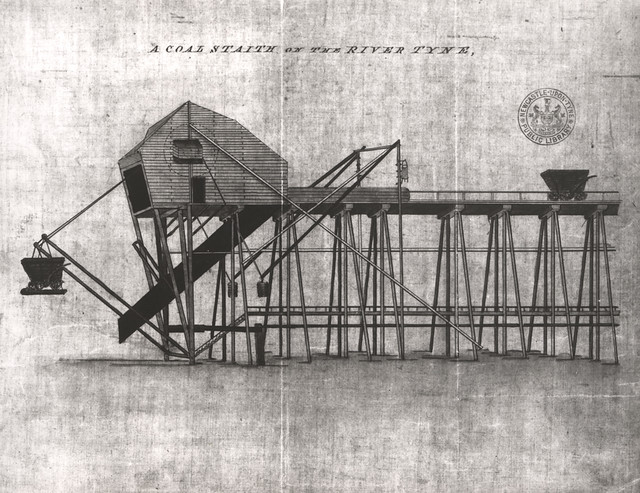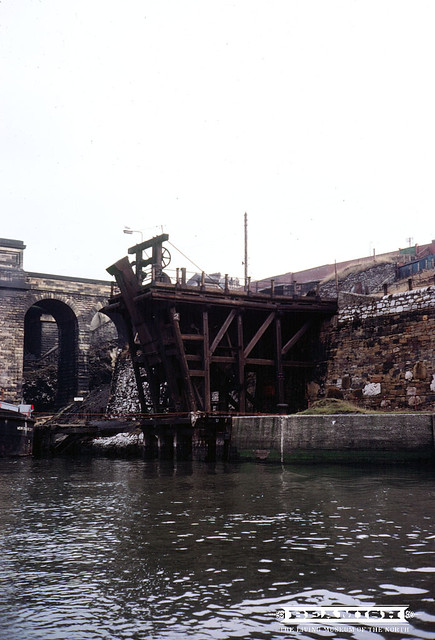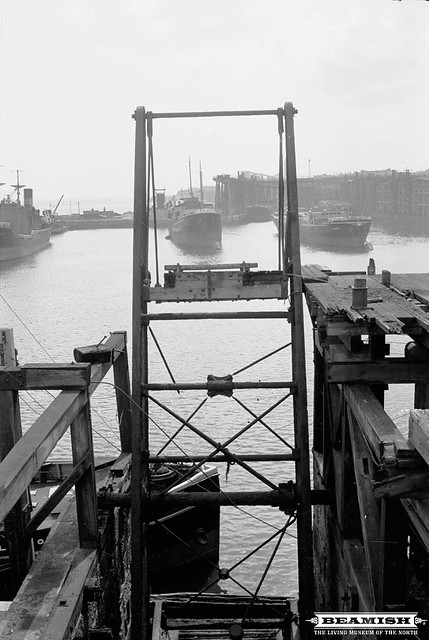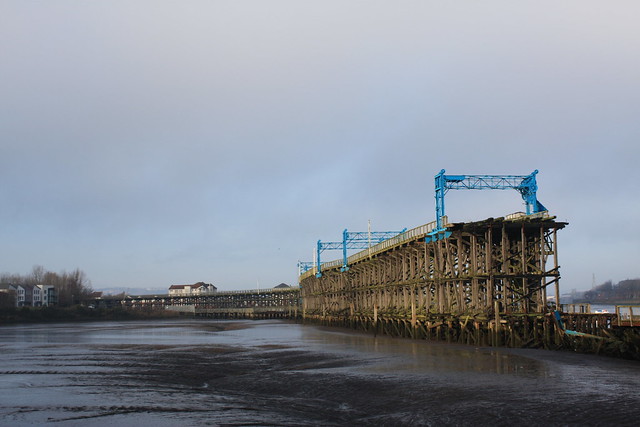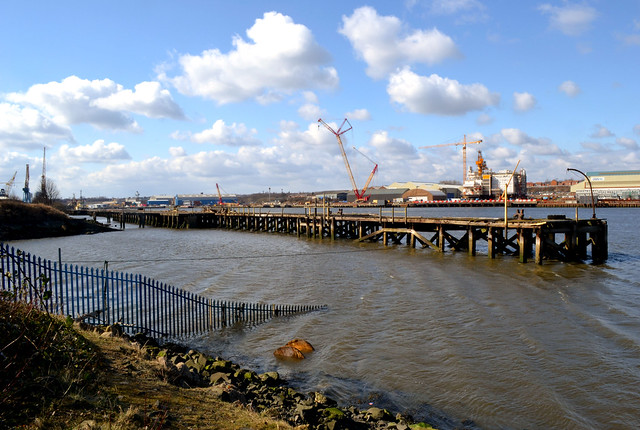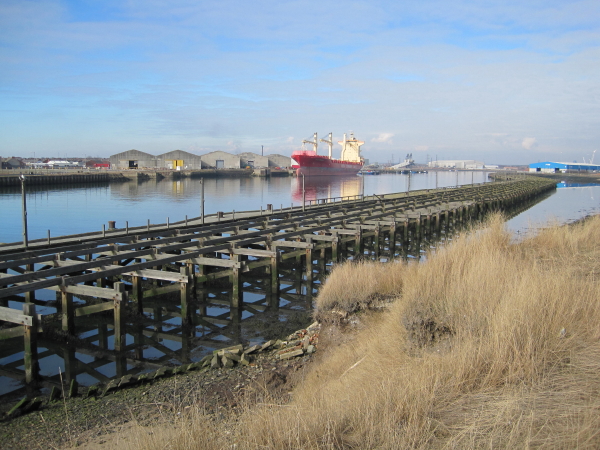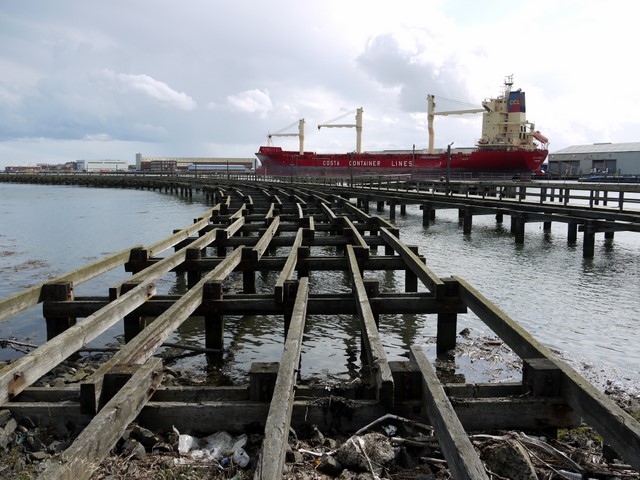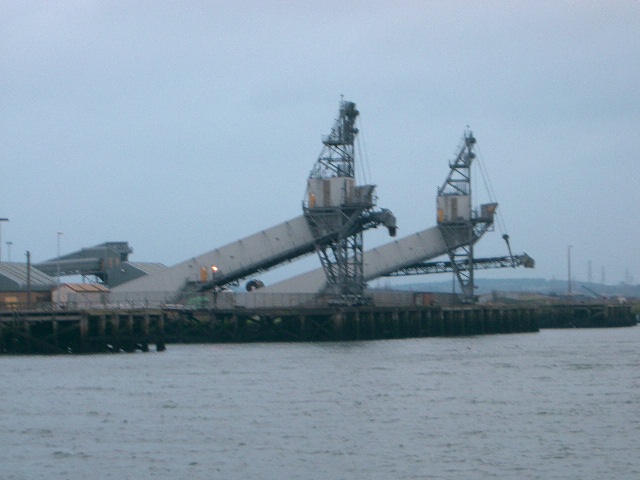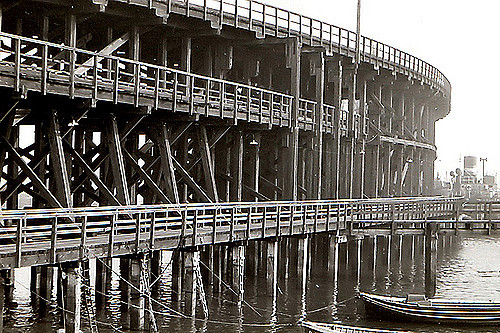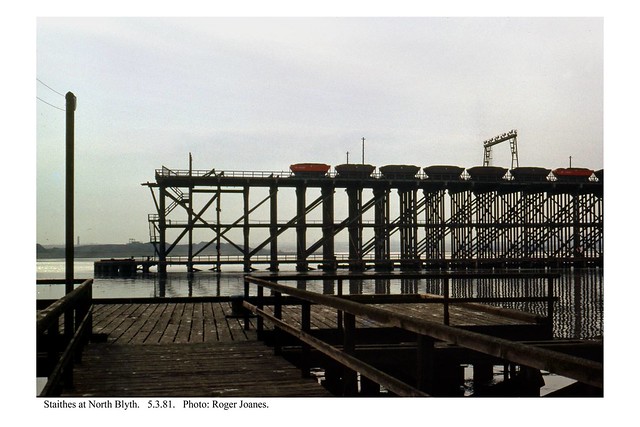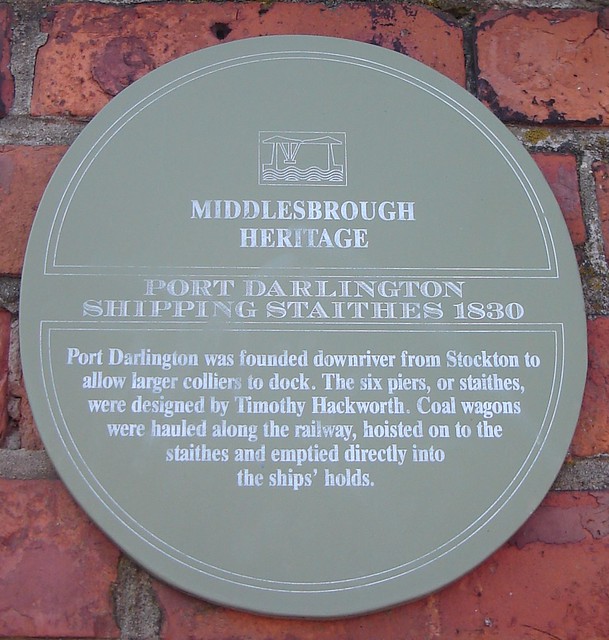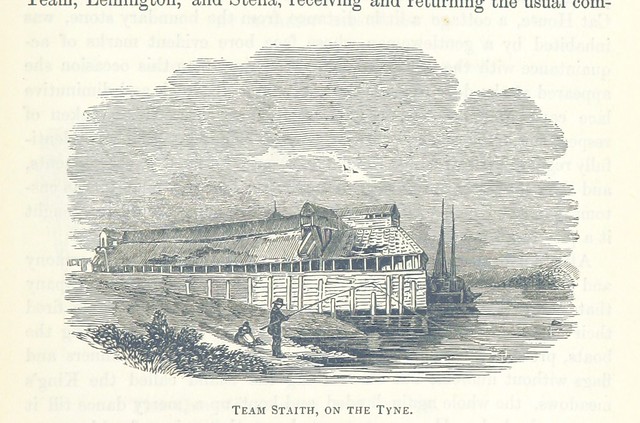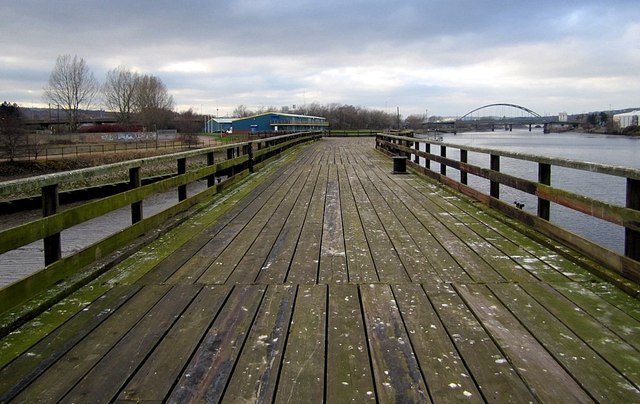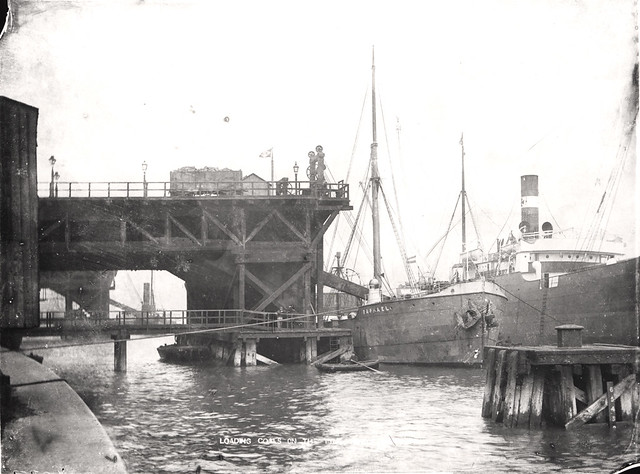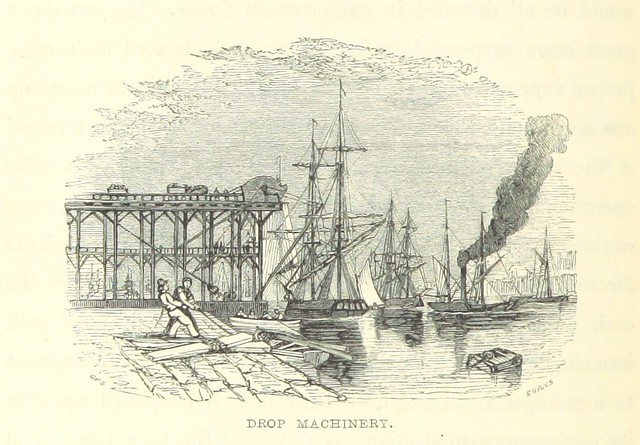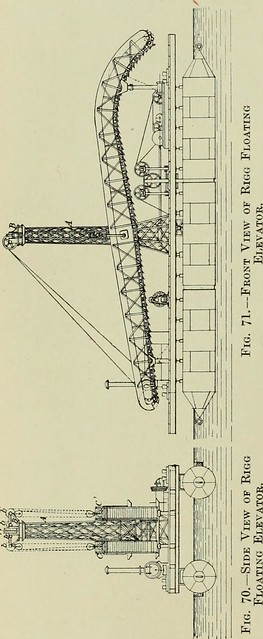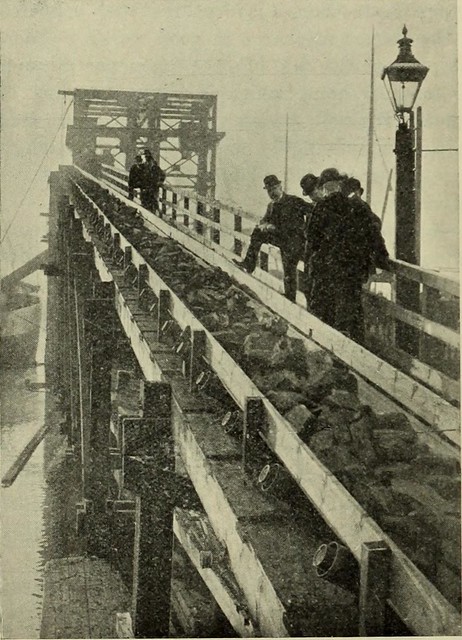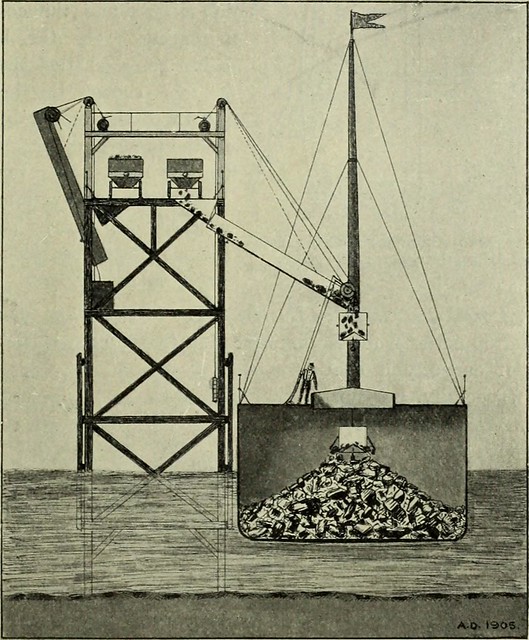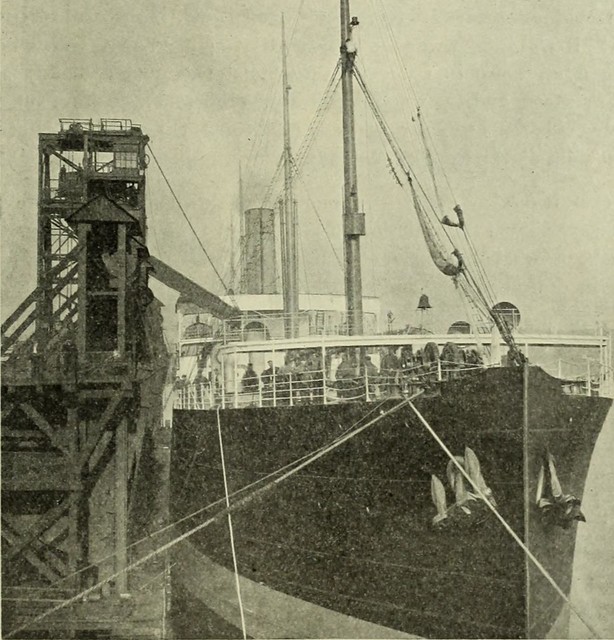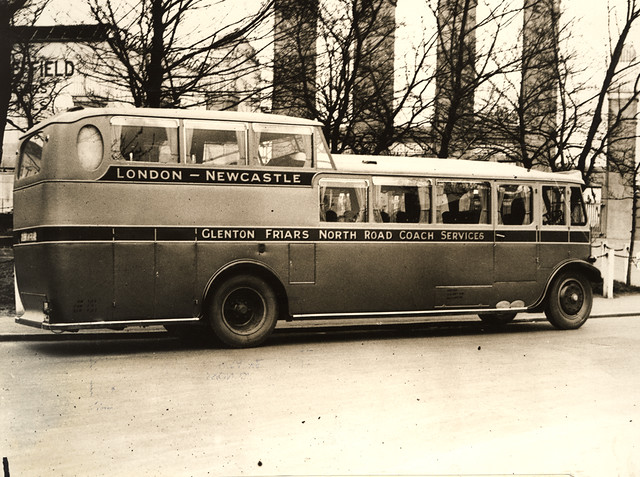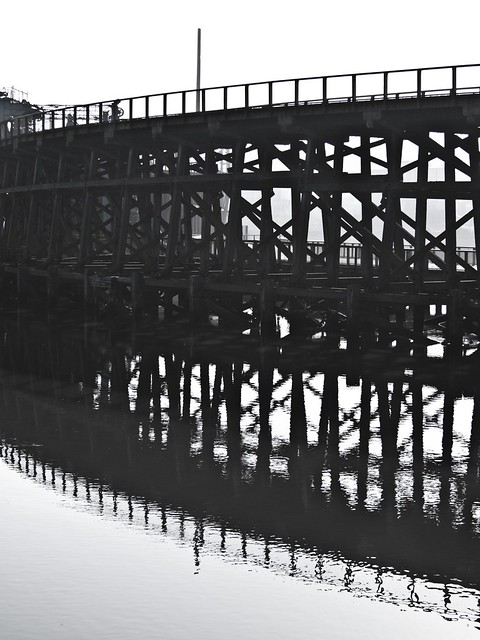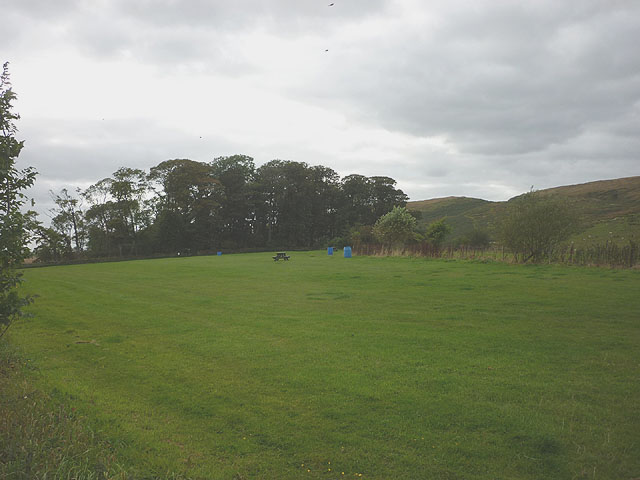Topics > Transport and Travel > Staiths
Staiths
Staiths are elevated platforms for discharging coal and other materials from railway cars into collier ships for transport. From the mid 18th century onwards, many staiths were built on the Tyne, Wear and other rivers in the North East to transport coal, which came from the regions mines via an extensive network of waggonways. Wagons of coal were pulled by horses and later replaced by steam engines. A surviving example is Dunston Staiths on the River Tyne, which handled over 5 million tonnes of coal each year brought by rail from the Durham coalfields, and is believed to be the largest timber structure in Europe. Before the use of staiths, coal had to be loaded onto wooden boots (keels), which took the coal out to the collier ships; in 1794 Tyneside keelmen went on strike against the use of staiths for loading coal.

from Beamish (flickr)
Wear Bridges from the Lambton Drops, Sunderland - 1968
Pinned by Simon Cotterill
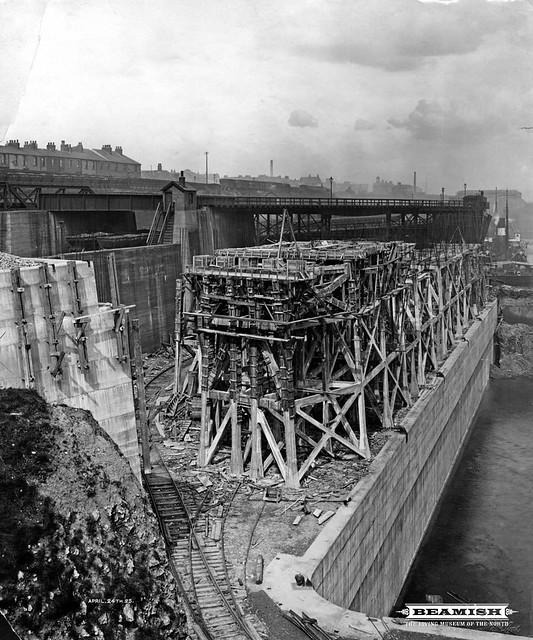
from Beamish (flickr)
General view of the construction work for the Seaham Harbour South Dock Expansion, 1925
Pinned by Simon Cotterill

Co-Curate Page
Dunston Staiths
- Overview About Dunston Staiths Timeline Map Street View "Dunston Staiths on the River Tyne is believed to be the largest timber structure in Europe, at its height, 5.5m tonnes of …

from Beamish (flickr)
Lambton and Hetton Staiths tunnels, Sunderland - 1968
Pinned by Simon Cotterill

Co-Curate Page
Waggonways
- "In the early 1600s a Nottinghamshire businessman called Huntingdon Beaumont came to Northumberland and laid rails from collieries near Blyth to a shipping point on the coast. His wooden waggonway …
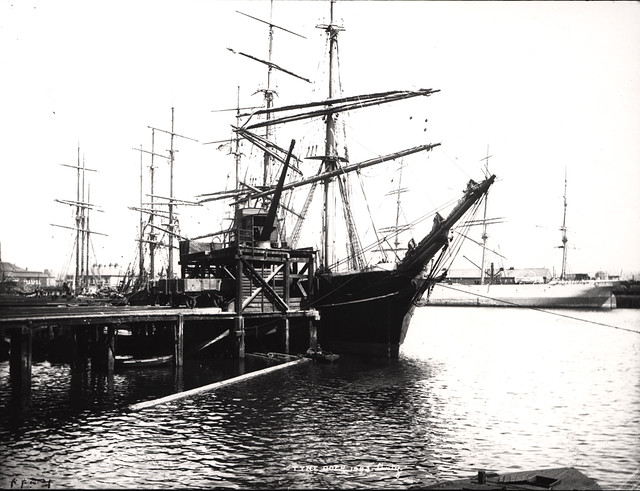
from Newcastle libraries (flickr)
025196:Staiths South Shields unknown c.1890
Pinned by Simon Cotterill
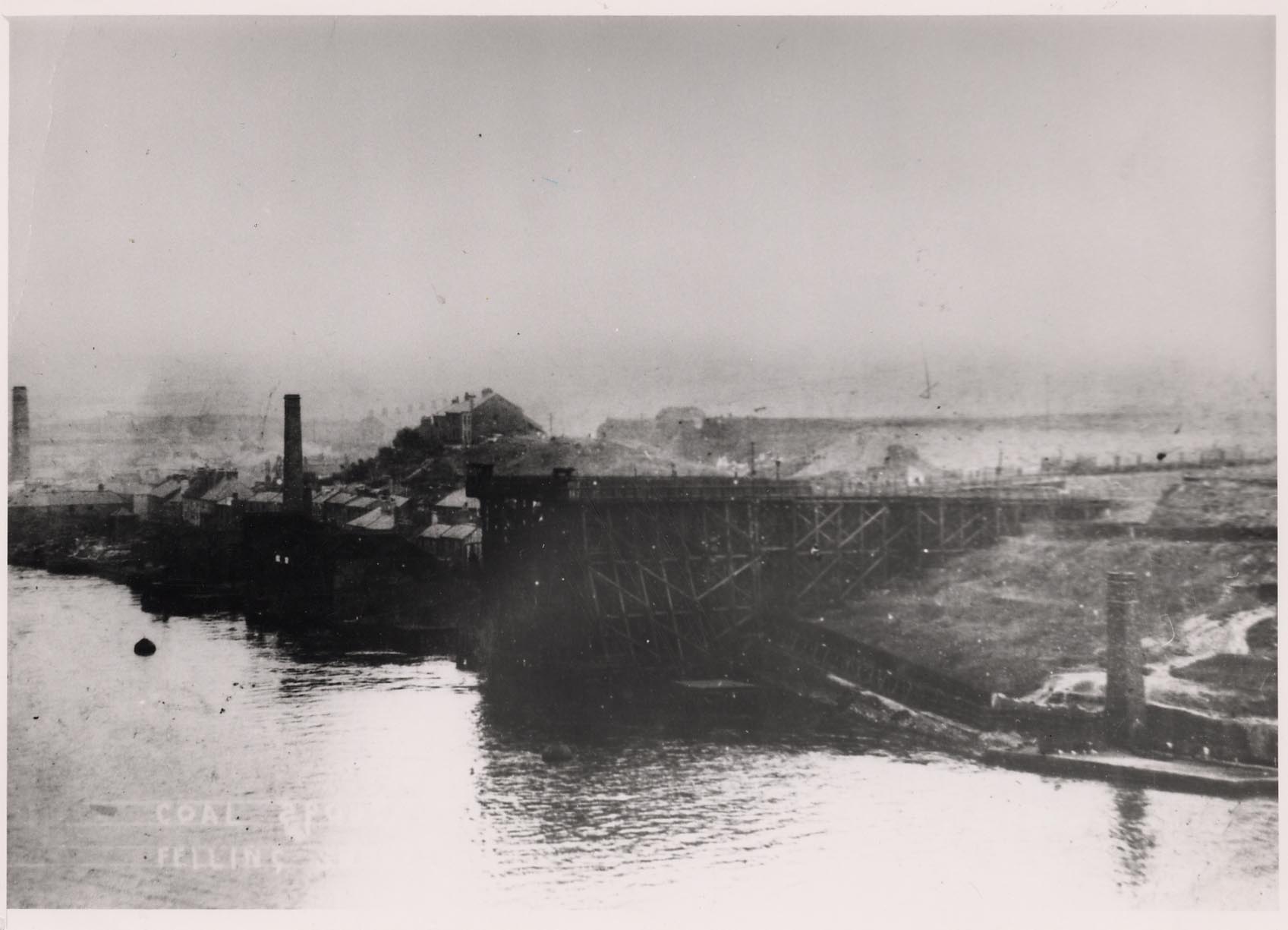
from http://commons.wikimedia.org/…
Coal Staithes, Felling Shore
- "Coal was transported, on waggonways, from the collieries to the staithes. Earlier pits were situated near to the River Tyne as possible, so that coal could be carried easily to …
Added by
Simon Cotterill

from http://heddonhistory.weebly.c…
Lemington Staiths and Lemington Gut
- "As part of my research for the Puffing Billy Festival this summer I decided to see what I could find out about the eastern end of the Wylam Waggonway. This …
Added by
Simon Cotterill
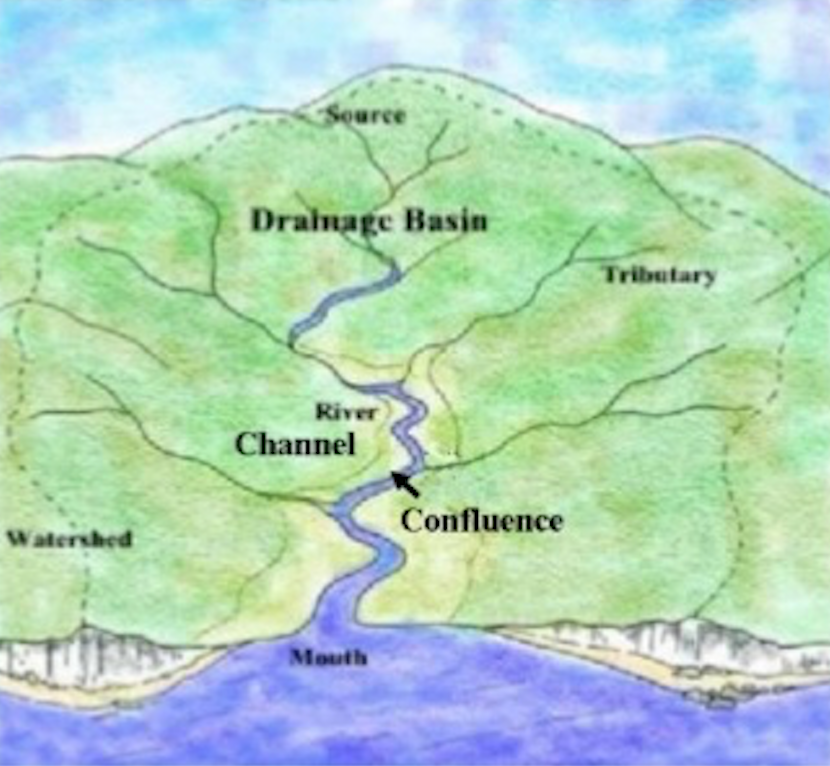
Co-Curate Page
Rivers
- Rivers have played an important role in shaping the development and identity of communities in the North East. Many settlements have grown up at locations near rivers, which provided essential …
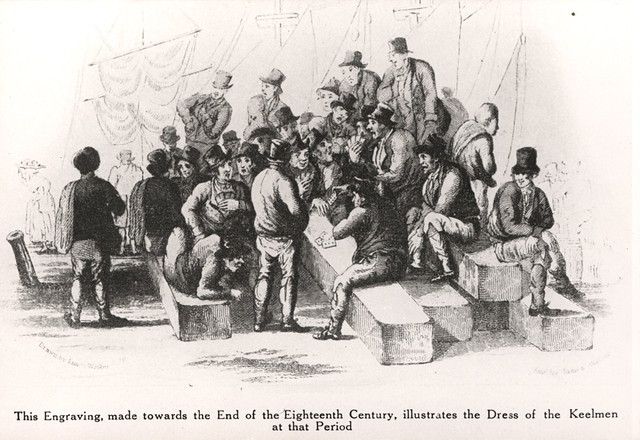
Co-Curate Page
Keelman
- Overview About Keelmen The Keelmen worked on keels, large wooden shallow-draught boats, which carried coal from the river banks out to waiting collier ships. The keelmen working on the Tyne and …
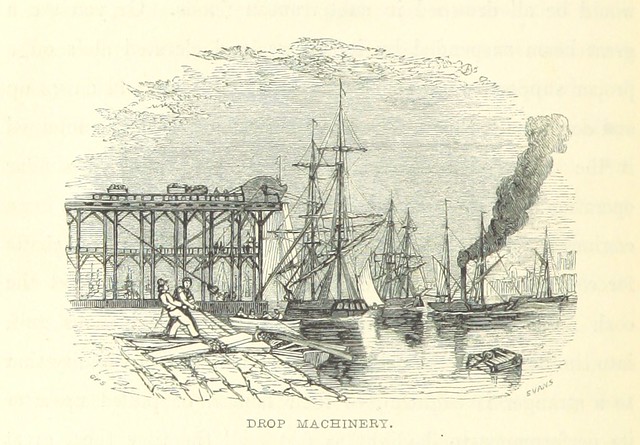
from Flickr (flickr)
Image taken from page 306 of 'Second series. Chiefly in the Counties of Durham and Northumberland'
Pinned by Simon Cotterill
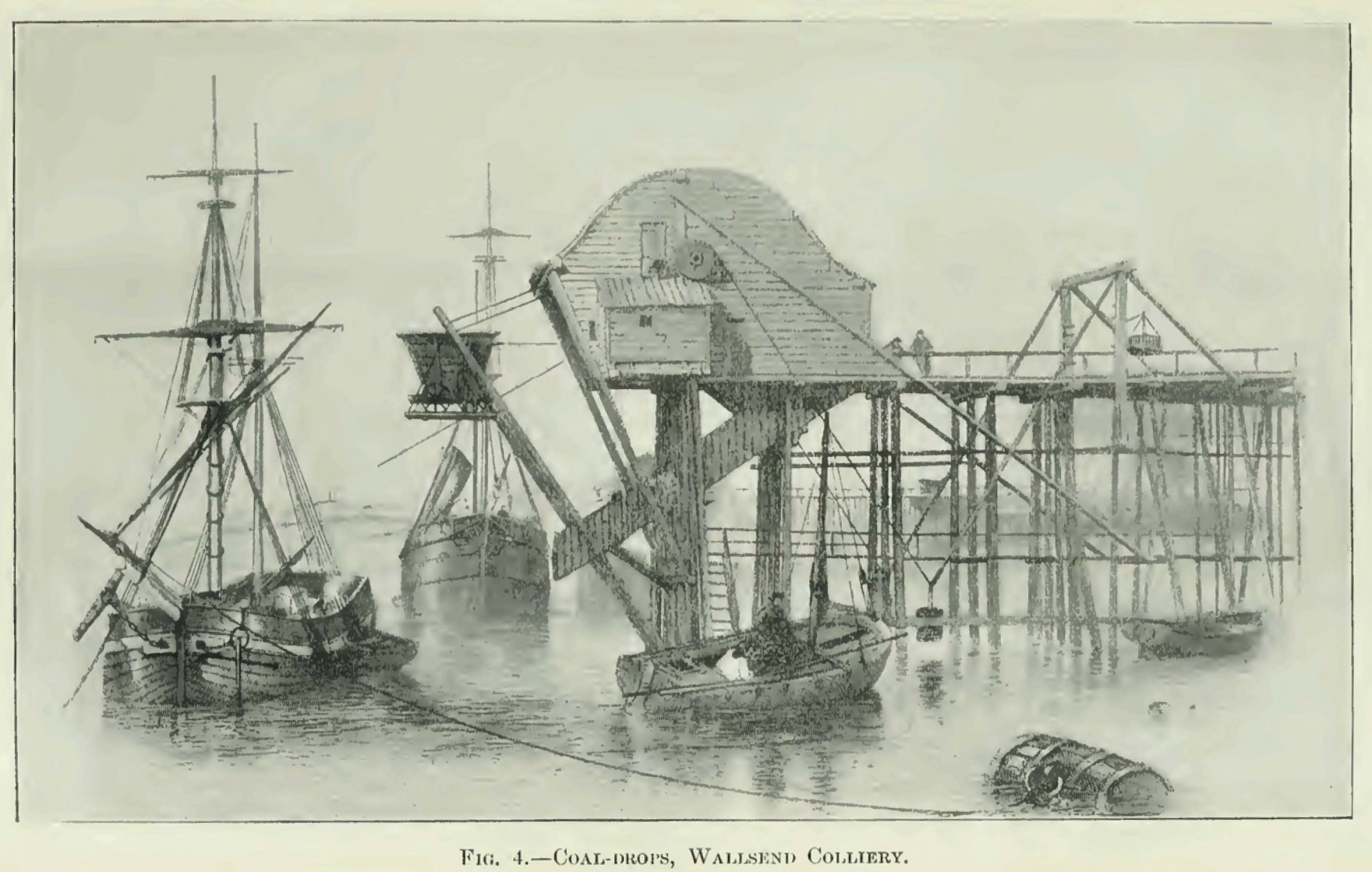
from https://co-curate.ncl.ac.uk/w…
Coal Drops, Wallsend Colliery
- Image from TE. Forster, 'Historical notes on Wallsend Colliery', published 1898. Image is public domain (the author deceased over 70 years ago).
Added by
Simon Cotterill

Co-Curate Page
Washington Staithes
- Washington Staithes was an area of County Durham prior to the development of the new town of Washington from 1964. Located on the north banks of the River Wear, there …


from Beamish (flickr)
Wear Bridges from the Lambton Drops, Sunderland - 1968
Pinned by Simon Cotterill

from Beamish (flickr)
General view of the construction work for the Seaham Harbour South Dock Expansion, 1925
Pinned by Simon Cotterill

Co-Curate Page
Dunston Staiths
- Overview About Dunston Staiths Timeline Map Street View "Dunston Staiths on the River Tyne is believed to be the largest timber structure in Europe, at its height, 5.5m tonnes of …

from Beamish (flickr)
Lambton and Hetton Staiths tunnels, Sunderland - 1968
Pinned by Simon Cotterill

Co-Curate Page
Waggonways
- "In the early 1600s a Nottinghamshire businessman called Huntingdon Beaumont came to Northumberland and laid rails from collieries near Blyth to a shipping point on the coast. His wooden waggonway …

from Newcastle libraries (flickr)
025196:Staiths South Shields unknown c.1890
Pinned by Simon Cotterill

from http://commons.wikimedia.org/…
Coal Staithes, Felling Shore
- "Coal was transported, on waggonways, from the collieries to the staithes. Earlier pits were situated near to the River Tyne as possible, so that coal could be carried easily to …
Added by
Simon Cotterill

from http://heddonhistory.weebly.c…
Lemington Staiths and Lemington Gut
- "As part of my research for the Puffing Billy Festival this summer I decided to see what I could find out about the eastern end of the Wylam Waggonway. This …
Added by
Simon Cotterill

Co-Curate Page
Rivers
- Rivers have played an important role in shaping the development and identity of communities in the North East. Many settlements have grown up at locations near rivers, which provided essential …

Co-Curate Page
Keelman
- Overview About Keelmen The Keelmen worked on keels, large wooden shallow-draught boats, which carried coal from the river banks out to waiting collier ships. The keelmen working on the Tyne and …

from Flickr (flickr)
Image taken from page 306 of 'Second series. Chiefly in the Counties of Durham and Northumberland'
Pinned by Simon Cotterill

from https://co-curate.ncl.ac.uk/w…
Coal Drops, Wallsend Colliery
- Image from TE. Forster, 'Historical notes on Wallsend Colliery', published 1898. Image is public domain (the author deceased over 70 years ago).
Added by
Simon Cotterill


